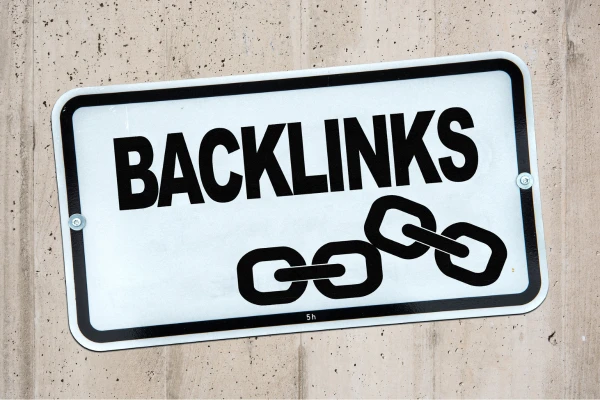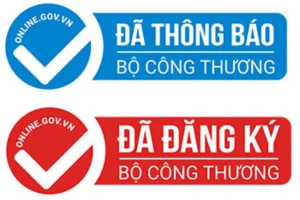How to Manage Domain Names to Avoid Loss and Errors?
Domain names are among the most valuable digital assets of a business. Whether you are a newly established startup or a long-standing company, owning a domain name is not simply for accessing a website. It is the face of your brand, your representative address on the internet, and a vital element in every digital communication and marketing strategy.
However, there are many cases where businesses lose their domain names due to forgotten renewals, occupation, theft, or lack of strict management, leading to serious damage to reputation and revenue.
So how do you manage domain names correctly? How do you avoid "fatal mistakes"? The following article will provide detailed, step-by-step instructions to help you control this valuable digital asset safely, effectively, and sustainably.

Domain Name – A Digital Asset That Needs Protection
A domain name is not just a website URL; it is a digital brand asset. In many cases, the value of a domain name is even greater than the website itself, especially with beautiful, short, memorable, or highly branded domains.
Losing a domain name means:
- Loss of organic traffic.
- Loss of credibility and trust from customers.
- Significant costs to buy it back (if there is still an opportunity).
- The risk of the domain being used for malicious purposes by competitors or third parties.
Therefore, domain name management cannot be done carelessly. Whether you are an individual or a business, you need an effective control system with processes, warnings, and risk management plans.
Common Risks When Managing Domain Names
Understanding common mistakes is the first step in prevention:
- Forgetting to renew the domain name, leading to revocation or complete loss.
- Not using domain name protection locks, making it easy for hackers to attack and transfer the domain name elsewhere.
- Not clearly delegating authority within the business, causing departing employees to take domain name management information with them.
- Registering the domain name under the account of a third party (employee, partner, service company), leading to ownership disputes.
- Not securing the registration account, leading to password theft or guessing.
- Not updating accurate contact information, making it impossible for the registrar to contact you in case of problems.

Guide to Effective Domain Name Management
Choose a Reputable Domain Name Registrar
The first thing you need to do is choose a domain provider with a strong brand, clear policies, and good support. Don't choose places without security commitments or slow support just because they are a few tens of thousands of dong cheaper.
Reputable registrars often have:
- Early warnings when the expiration date is approaching.
- Easy-to-manage interface, Vietnamese language support.
- 2-layer security policies.
- Integrated domain protection lock.
- Good customer care service.
Register Domain Names Under the Name of a Legal Entity or Legal Representative
Many small businesses assign domain name registration to employees or third parties. When staff resign or conflicts occur, they cannot regain ownership, leading to disputes or complete loss.
Note:
- The registered subject must be a legal entity (company) or an authorized representative.
- The registration email should use a business email that can be easily controlled and recovered.
- Store full information about the account, invoices, and contracts when purchasing the domain name.
Renew Domain Names on Time
This is the most common mistake that causes domain name loss. When the renewal date arrives, if you do not renew in time, the domain name will be put into a pending state, then revoked and may be resold.
How to prevent it:
- Enable auto-renew on the management system.
- Set up periodic reminders via email or SMS.
Renew for the maximum number of years if it is an important domain name. Many registrars allow payment for 5 – 10 years.

Activate Domain Lock
Most registrars provide a “Domain Lock” feature – preventing the transfer of the domain to another location without owner confirmation.
Activating this function helps:
- Prevent hackers from transferring domain names illegally.
- Increase security when the account is attacked.
- Protect the domain from unwanted operations.
Make sure your important domain names are all locked (status: clientTransferProhibited).
Use Two-Factor Authentication (2FA)
Bad actors often try to seize domain name management accounts by:
- Guessing weak passwords.
- Email scams (phishing).
- Exploiting login vulnerabilities.
Turning on 2-factor authentication (2FA) is the simplest and most effective way to fight these attacks. Each time you log in, the system will require an authentication code from an app (Google Authenticator, Authy…) or send it via SMS.

Provide Clear Authorization within the Business
If you are a large business, don't leave all management rights in the hands of a single individual.
Set up multiple levels of authorization: owner, technical administrator, support staff.
Store account information in a safe place, accessible when needed.
Have a transfer policy when personnel change.
Update Contact Information Regularly
When registering a domain name, you will need to provide:
- Full name of the manager.
- Contact email.
- Phone number.
- Address.
If you change any information without updating it, the registrar will not be able to contact you when problems arise, such as complaints, renewals, transfers, etc.
This is why many people do not receive warnings about losing their domain names.
Store and Backup Domain Information
Don't rely entirely on automated emails or technical staff. You need a domain management file that includes:
Full login information (encrypted or stored on a password manager).
- Registration date, expiration date.
- Registrar being used.
- Related services (DNS, email, SSL…).
- Invoices and documents.
You can use Excel, digital asset management software, or an internal CRM solution.
What to Do When a Domain Name Is Lost, Occupied, or Forgotten for Renewal?
If access to the domain name is lost, don't panic. Follow these steps:
- Contact the domain name registrar as soon as possible to check the status.
- Provide documents proving ownership (invoices, registration email, ID card, business license…).
- If the domain name is occupied, file a complaint with ICANN (for international domains) or VNNIC (for .vn domains).
- In the worst case, consult a IT lawyer or professional legal consulting service.

Mistakes to Avoid When Managing Domain Names
Registering domains through unreliable intermediaries.
Only buying 1 domain extension without securing other extensions (risk of counterfeiting).
Using an insecure personal email to manage domain names.
Not backing up DNS records – easy to be interrupted when transferring hosting.
Not transferring domains to the same administrative account – causing dispersion of control.
Tools & Services to Support Better Domain Name Management
Namecheap, GoDaddy, Google Domains – international providers with professional management systems.
- PA Vietnam, Matbao, iNET – domestic providers with Vietnamese language support.
- Cloudflare DNS – allows you to manage highly secure DNS, with DDoS protection features.
- LastPass, 1Password – manage account passwords securely.
- Excel, Notion, Google Sheet – create a list and track domain names effectively.
Contact Information
- MIMA DIGITAL – MIMA TRADING SERVICE CO., LTD
- Tax Code: 0318672839
- Address: Hoc Mon District, Ho Chi Minh City
- Hotline/Zalo: 0909 035 333
- Email: info@mimadigi.com
- Website: https://mimadigi.com


























Share your review